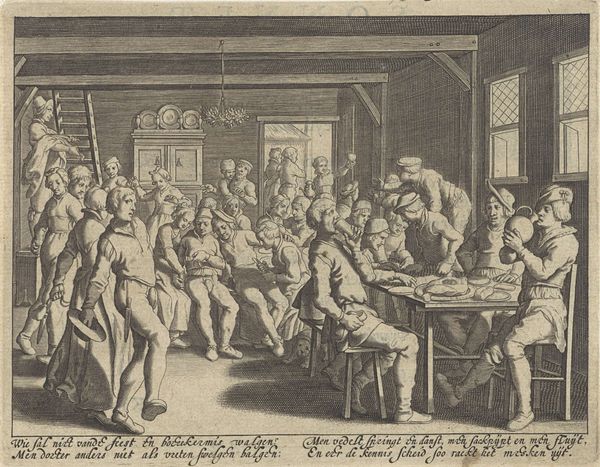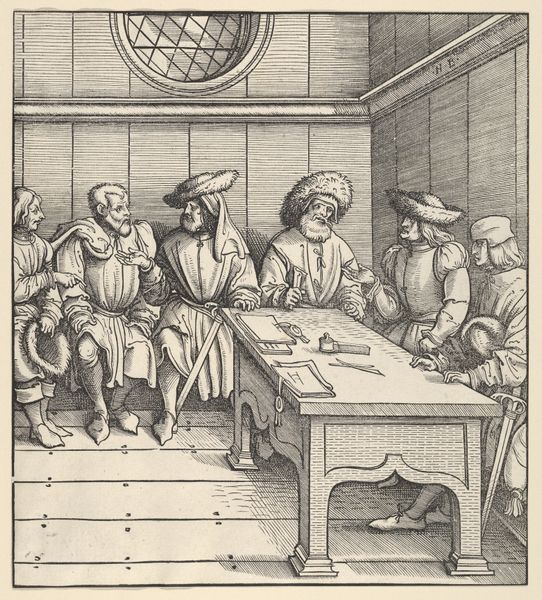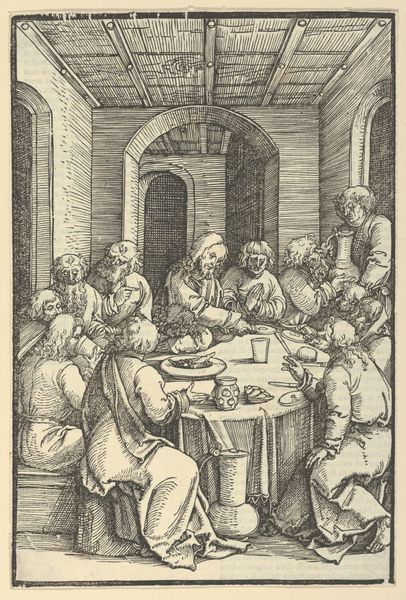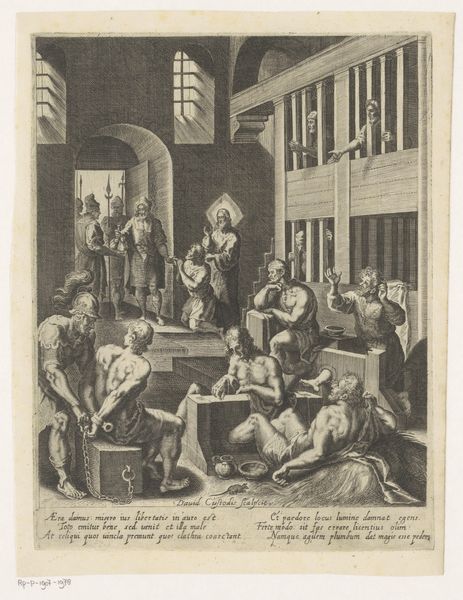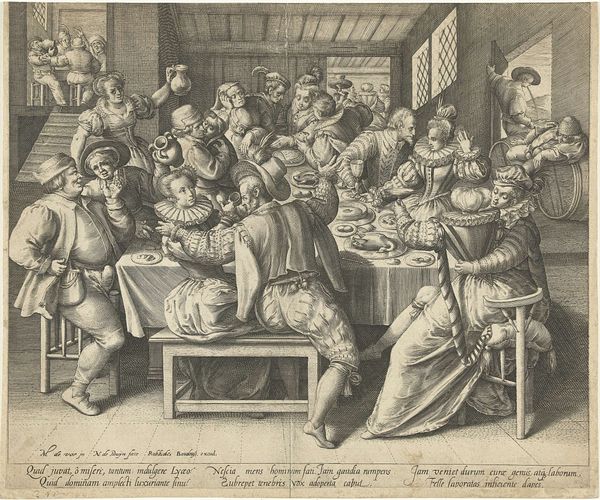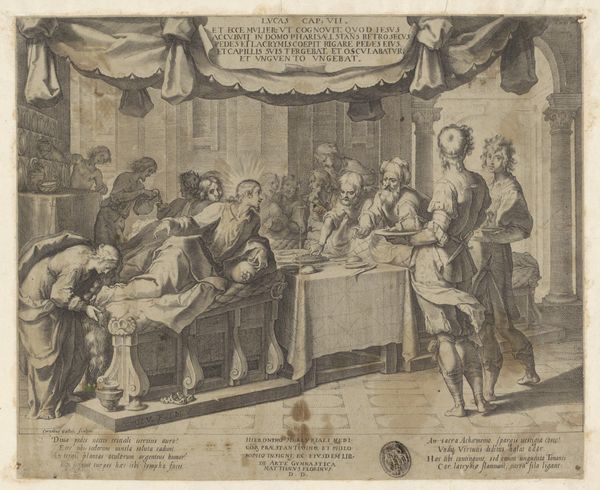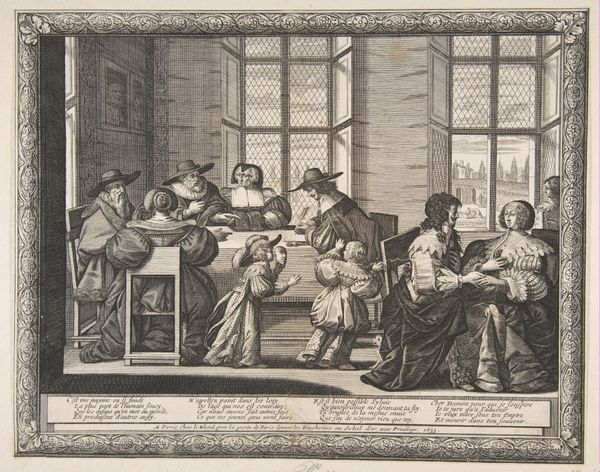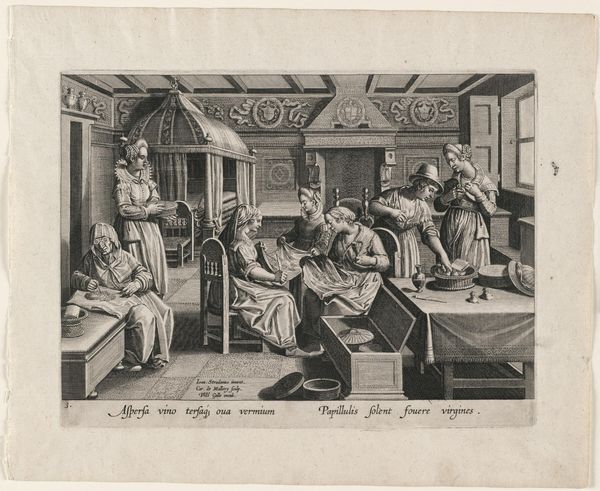
drawing, print, engraving
#
drawing
#
narrative-art
# print
#
old engraving style
#
mannerism
#
history-painting
#
engraving
Dimensions: sheet: 10 9/16 x 14 1/8 in. (26.8 x 35.8 cm)
Copyright: Public Domain
Curator: Here we have Hendrick Goltzius' "The Last Supper," an engraving from 1585. It's currently held at the Metropolitan Museum of Art. Editor: What strikes me immediately is the almost unsettling drama captured in stark monochrome. There's an energy that almost transcends the traditional somber depictions of the scene. Curator: Precisely! Goltzius, working firmly within the Mannerist style, manipulates form and perspective to heighten the emotional impact. Note how the elongated figures and exaggerated gestures contribute to the scene’s frenetic tension. Editor: And considering the sociopolitical environment, with the rise of the Counter-Reformation, the intense emotions are almost amplified. The tension speaks volumes about the period's religious strife. The print allows wider access than paintings would have offered. Curator: Absolutely, the medium itself informs our reading. The engraving technique, with its network of fine lines, allows for incredible detail, almost inviting microscopic examination. Consider how he models forms using hatching and cross-hatching to suggest volume. Editor: Looking closely, it feels as if each character is performing, heightening the drama. Is that perhaps indicative of the era's evolving theater scene? The gestures are bold, almost theatrical, and must have resonated deeply. Curator: It’s difficult to ignore those grand performative elements when you situate this Last Supper engraving amid debates around the Eucharist and image worship prevalent at that time. It is definitely a dramatic restaging and not merely a reverent illustration. Editor: This approach really moves it beyond purely religious art; there's an interrogation of humanity itself in the depiction of faith, doubt, and impending betrayal. The focus seems as much on the characters and their individual stories as it is on any central message. Curator: Ultimately, what we're seeing is Goltzius’ command of form serving to underline the narratives of each figure at the table as well as the narrative implications of a scene immediately recognizable from religious and art histories. Editor: Seeing "The Last Supper" rendered like this really throws the door open to considering the political environment during the late 16th century, and to realizing the power of this sort of image, widely accessible in print form.
Comments
No comments
Be the first to comment and join the conversation on the ultimate creative platform.

